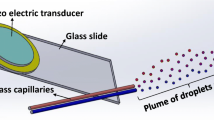Abstract
High resolution and tandem mass spectrometry are popular techniques for the structure elucidation of small molecule impurities and metabolites. However, proposing definitive structures for isomers solely based on the mass spectrometry data can be challenging. Hydrogen/Deuterium exchange mass spectrometry can be used as an effective tool for the structure elucidation of isomers by determining the number of exchangeable hydrogen atoms on heteroatomic functional groups. The study demonstrates a simple and effective online hydrogen/deuterium exchange technique using two-dimensional liquid chromatography mass spectrometry for unknown impurity and metabolite structure elucidation. A mixture of isomeric compounds were separated in the first dimension of the two-dimensional liquid chromatography and transferred to the second dimension using heart-cutting valve. The hydrogen/deuterium exchange was carried out in the second dimension using deuterium oxide as one of the mobile phase solvents. The eluents were analyzed after hydrogen/deuterium exchange with mass spectrometry. The application of two-dimensional liquid chromatography mass spectrometry for hydrogen/deuterium exchange experiments provides unique advantages of simplicity along with minimized time and resources.



Similar content being viewed by others
References
Guidance for Industry: Q3B (R2) Impurities in New Drug Products (2006) US Food Drug Administration, Rockville. https://www.fda.gov. Accessed 13 Dec 2022
Product Properties Test Guidelines OPPTS 830.1550 Product Identity and Composition (1996) United States Environmental Protection Agency, Washington. https://www.epa.gov. Accessed 23 Jan 2023
Görög S (2018) Critical review of reports on impurity and degradation product profiling in the last decade. Trends Anal Chem 101:2–16
Safety Testing of Drug Metabolites: Guidance for Industry (2020) US Food Drug Administration, Rockville. https://www.fda.gov. Accessed 13 Dec 2022
Health Effects Test Guidelines OPPTS 870.7485 Metabolism and Pharmacokinetics (1998) United States Environmental Protection Agency, Washington. https://www.epa.gov. Accessed 23 Jan 2023
Argentine MD, Owens PK, Olsen BA (2007) Strategies for the investigation and control of process-related impurities in drug substances. Adv Drug Deliv Rev 59:12–28
Maggio RM, Calvo NL, Vignaduzzo SE, Kaufman TS (2014) Pharmaceutical impurities and degradation products: uses and applications of NMR techniques. J Pharm Biomed Anal 101:102–122
De Vijlder T, Valkenborg D, Lemière F, Romijn EP, Laukens K, Cuyckens F (2018) A tutorial in small molecule identification via electrospray ionization-mass spectrometry: the practical art of structural elucidation. Mass Spectrom Rev 37:607–629
Dias DA, Jones OA, Beale DJ, Boughton BA, Benheim D, Kouremenos KA et al (2016) Current and future perspectives on the structural identification of small molecules in biological systems. Metabolites 6:46
Iacobucci C, Sinz A (2017) To be or not to be? Five guidelines to avoid misassignments in cross-linking/mass spectrometry. Anal Chem 89:7832–7835
Damont A, Legrand A, Cao C, Fenaille F, Tabet JC (2021) Hydrogen/deuterium exchange mass spectrometry in the world of small molecules. Mass Spectrom Rev 42:e2765
Acter T, Kim D, Ahmed A, Jin JM, Yim UH, Shim WJ et al (2016) Optimization and application of atmospheric pressure chemical and photoionization hydrogen–deuterium exchange mass spectrometry for speciation of oxygen-containing compounds. Anal Bioanal Chem 408:3281–3293
Acter T, Cho Y, Kim S, Ahmed A, Kim B, Kim S (2015) Optimization and application of APCI hydrogen–deuterium exchange mass spectrometry (HDX MS) for the speciation of nitrogen compounds. J Am Soc Mass Spectrom 26:1522–1531
Kostyukevich Y, Acter T, Zherebker A, Ahmed A, Kim S, Nikolaev E (2018) Hydrogen/deuterium exchange in mass spectrometry. Mass Spectrom Rev 37:811–853
Liu DQ, Hop CE (2005) Strategies for characterization of drug metabolites using liquid chromatography–tandem mass spectrometry in conjunction with chemical derivatization and on-line H/D exchange approaches. J Pharm Biomed Anal 37:1–18
Acknowledgements
We would like to thank Daniel Knueppel, Mingming Ma, and Jeff Gilbert for their guidance and support for this project.
Funding
This work was supported by Corteva Agriscience.
Author information
Authors and Affiliations
Contributions
Authors JTJ and RAP have contributed equally to the preparation of manuscript.
Corresponding author
Ethics declarations
Conflict of interest
The authors have no relevant financial or non-financial interests to disclose.
Additional information
Publisher's Note
Springer Nature remains neutral with regard to jurisdictional claims in published maps and institutional affiliations.
Supplementary Information
Below is the link to the electronic supplementary material.
Rights and permissions
Springer Nature or its licensor (e.g. a society or other partner) holds exclusive rights to this article under a publishing agreement with the author(s) or other rightsholder(s); author self-archiving of the accepted manuscript version of this article is solely governed by the terms of such publishing agreement and applicable law.
About this article
Cite this article
Johnson, J.T., Patil, R.A. & Zu, C. Two-Dimensional Liquid Chromatography–Mass Spectrometry: Heart-Cutting Hydrogen/Deuterium Exchange as a Tool for Small Molecule Structure Elucidation. Chromatographia 86, 535–540 (2023). https://doi.org/10.1007/s10337-023-04265-0
Received:
Revised:
Accepted:
Published:
Issue Date:
DOI: https://doi.org/10.1007/s10337-023-04265-0




